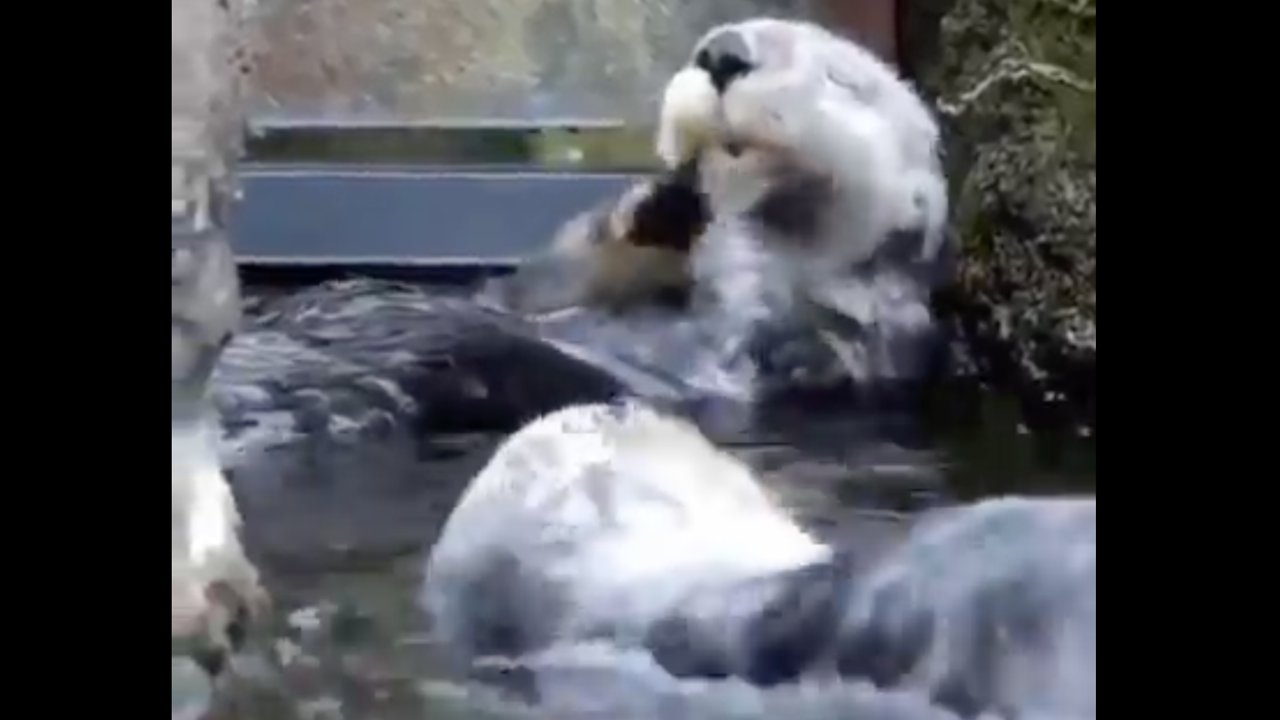Premium Only Content

I need this level of relaxation in my life
This Otter massage his face is so adorable while the other one is enjoying fresh water in rotating himself
Only one otter species seems to be thriving, and that's the North American River Otter. The other 12 otter species were recently identified by the International Union for Conservation of Nature (IUCN) as having decreasing populations, and five otter species are already on the endangered list. Among the endangered are the sea otters along the Californian to Alaskan coasts, which are threatened by "environmental pollutants and disease agents." Others, like the marine otters of South America, have had their numbers reduced because of poaching, as well as environmental concerns. This ancient religion considered otters to be the dogs of the river or sea and had strict rules forbidding the killing of otters. It was thought that otters helped keep water purified by eating already dead creatures that might contaminate the water source if they were allowed to rot. Zoroastrians would also hold ceremonies for otters found dead in the wild.
Otters use their dung—known as spraint—to communicate with other otters. The mammals like to keep things organized within their communities and will designate certain areas to be used as latrines. Spraint scents can vary, but often are (relatively) pleasant—one expert described them as not "dissimilar to jasmine tea." Spraint composition is unique to each otter, and the creatures can identify each other by the smells. Scientists suspect otters may even be able to determine the sex, age, and reproductive status of the spraint dropper just from a quick whiff. And since otters have superb metabolisms and can easily eat up to 15 percent of their body weight each day, there's a lot of spraint to go around. In 2001, a female otter at the Monterey Bay Aquarium gave birth to a stillborn pup on the same day a stranded pup was discovered in the wild nearby. The aquarium staff had previously tried raising pups themselves but found that hand-raised otters became too attached to humans to be released back into the wild. So instead, they dropped the pup in with the female otter, and she immediately went into mom mode. The aquarium has since devised a system of hand-rearing pups for the first six to eight weeks—mostly for bottle feeding purposes—before handing the pups off to female otters for raising. At six months, the pups are released back into the wild with generally strong results. Otters can have up to one million hairs per square inch. There are two layers of fur—an undercoat and then longer hairs that we can see. The layers manage to trap air next to the otter's skin, which keeps the otters dry and warm and also helps with buoyancy. Otter pups have so much air trapped in there, they actually can’t dive under water, even if they want to.
Thank you for watching my video
-
 0:05
0:05
Funny Channel
2 years agoDo not imitate dangerous actions 😂
39 -
 8:58
8:58
MegaChopCEO
4 years agoLevel Up Life Group!
100 -

Turning Point USA
7 hours agoLIVE NOW - AMFEST IS BACK - ERIKA KIRK, MICHAEL KNOWLES, TUCKER CARLSON, BEN SHAPIRO & RUSSELL BRAND
301K116 -
 LIVE
LIVE
TimcastIRL
2 hours agoMarijuana LEGALIZATION IS COMING, Trump Orders Weed To Schedule 3 In HUGE Move | Timcast IRL
4,915 watching -
 LIVE
LIVE
megimu32
2 hours agoON THE SUBJECT: CHRISTMAS CORE MEMORIES
195 watching -
 UPCOMING
UPCOMING
DLDAfterDark
36 minutes agoThe Very Merry HotDog Waffle Christmas Stream! Gun Talk - God, Guns, and Gear
1 -
 1:19:51
1:19:51
Tundra Tactical
11 hours ago $1.94 earnedThursday Night Gun Fun!!! The Worlds Okayest Gun Show
7.17K -
 55:11
55:11
Sarah Westall
22 hours agoHumanity Unchained: The Awakening of the Divine Feminine & Masculine w/ Dr. Brianna Ladapo
5.25K3 -
 1:42:41
1:42:41
Glenn Greenwald
6 hours agoReaction to Trump's Primetime Speech; Coldplay "Adultery" Couple Reappears for More Shame; Australia and the UK Obey Israel's Censorship Demands | SYSTEM UPDATE #560
95.1K54 -
 2:46:41
2:46:41
Barry Cunningham
4 hours agoBREAKING NEWS: President Trump Signs The National Defense Authorization Act | More News!
17.4K18